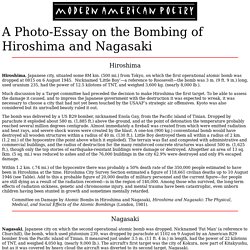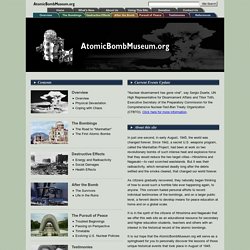

Absurd Drama - Martin Esslin. 'The Theatre of the Absurd' has become a catch-phrase, much used and much abused.

What does it stand for? And how can such a label be justified? Perhaps it will be best to attempt to answer the second question first. There is no organised movement, no school of artists, who claim the label for themselves. A good many playwrights who have been classed under this label, when asked if they belong to the Theatre of the Absurd, will indigniantly reply that they belong to no such movement - and quite rightly so. Yet critical concepts of this kind are useful when new modes of expression, new conventions of art arise. And yet, strangely enough, these plays have worked, they have had an effect, they have exercised a fascination of their own in the theatre. Yet, if tackled directly most of the playwrights in question would refuse to discuss any theories or objectives behind their work. Challenges of the Cold War. Fog Of War Eleven Lessons From The Life Of Robert S. Mcnamara.
HIROSHIMA_T1.mp4. Assessment Schedule English Extension Course 1 2017. A Time-Lapse Map of Every Nuclear Explosion Since 1945 - by Isao Hashimoto. A Movie - Bruce Conner - Vídeo Dailymotion. The Bomb SBS On Demand.flv. English prescriptions 2015 20. Article on cold war literature. Cold-war. Cold War - Comrades [E1/24] Beating The Bomb - FULL MOVIE. Was Hiroshima Necessary? Was Hiroshima Necessary?

Why the Atomic Bombings Could Have Been Avoided By Mark Weber On August 6, 1945, the world dramatically entered the atomic age: without either warning or precedent, an American plane dropped a single nuclear bomb on the Japanese city of Hiroshima. The explosion utterly destroyed more than four square miles of the city center. About 90,000 people were killed immediately; another 40,000 were injured, many of whom died in protracted agony from radiation sickness. Between the two bombings, Soviet Russia joined the United States in war against Japan. In a broadcast from Tokyo the next day, August 10, the Japanese government announced its readiness to accept the joint American-British "unconditional surrender" declaration of Potsdam, "with the understanding that the said declaration does not compromise any demand which prejudices the prerogatives of His Majesty as a Sovereign Ruler.
" A Beaten Country Japan Seeks Peace A Secret Memorandum Is this memorandum authentic? ... After the Bomb. Home > English > Extension 1 > Module B: Texts and Ways of Thinking > Elective 1: After the Bomb > After the Bomb Does not my heat astound you!

And my light! All by myself I am a huge camellia Glowing and coming and going, flush on flush. Sylvia Plath Fever 103 Materials prepared by David Barbara, Farrer High School A Shift in Global Consciousness The Rubric Introduction to Elective 1: After the Bomb Dropping the bomb Hiroshima by John Hersey Poems from Ariel by Sylvia Plath Absurdism, the peace movement and CATCH 22 Related texts Creative writing concepts A Shift in Global Consciousness Events occur that move communities. A Photo-Essay on the Bombing of Hiroshima and Nagasaki. A Photo-Essay on the Bombing of Hiroshima and Nagasaki Hiroshima Hiroshima, Japanese city, situated some 8M km. (500 mi.) from Tokyo, on which the first operational atomic bomb was dropped at 0815 on 6 August 1945.

Nicknamed 'Little Boy’—a reference to Roosevelt—the bomb was 3 m. (9 ft. 9 in.) long, used uranium 235, had the power of 12.5 kilotons of TNT, and weighed 3,600 kg. (nearly 8,000 lb.). Hiroshima Atomic Bomb, 1945 - A Day That Shook The World. What Nagasaki looked like before and after the atomic bomb. Nagasaki marks anniversary of atomic bombing Japan marks the 70th anniversary of the atomic bombing of Nagasaki during World War 2.

Three days after levelling the city of Hiroshima with a uranium atomic bomb known as a "Little Boy", the United States dropped the more menacing-sounding "Fat Man" over Nagasaki. It was August 9, 1945. Between 40,000 and 80,000 people were killed, and much of the city was pulverised. Nuclear weapons have never again been used in warfare. Cold War Museum. AtomicBombMuseum.org. "Nuclear disarmament has gone viral", say Sergio Duarte, UN High Representative for Disarmament Affairs and Tibor Tóth, Executive Secretary of the Preparatory Commission for the Comprehensive Nuclear-Test-Ban Treaty Organization (CTBTO).

Click here for more information. In just one second, in early August, 1945, the world was changed forever. Since 1942, a secret U.S. weapons program, called the Manhattan Project, had been at work on two revolutionary bombs of such intense heat and explosive force that they would reduce the two target cities—Hiroshima and Nagasaki—to vast scorched wastelands. But it was their radioactivity, which remained deadly long after the debris settled and the smoke cleared, that changed our world forever. As citizens gradually recovered, they naturally began thinking of how to avoid such a horrible fate ever happening again, to anyone. “To remember the past is to commit oneself to the future. Waiting for Godot: Act 1 Summary. Waiting for Godot full play. Theatre of the Absurd Conventions.